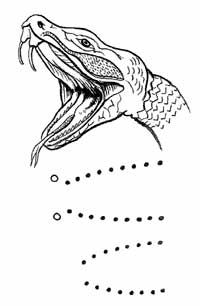 “©2006 Publications International, Ltd. Poisonous snake
“©2006 Publications International, Ltd. Poisonous snake
Poisonous snakebites are rare in North America. Most snakes are nonpoisonous, and neither poisonous nor nonpoisonous snakes will attack a cat unless provoked. But cats are curious, and bites will occur.
If a cat has a snakebite, he or she might have pale or white cat gums and rapid heartbeat or rapid breathing. Whether your cat is bitten by a poisonous or nonpoisonous snake, you need to administer the proper cat care to help your four-legged friend.
Poisonous Snakebite
Some signs of a poisonous snakebite are two fang marks, pain, swelling, vomiting, difficulty breathing, possible paralysis, and convulsions.
Treatment must begin as soon as possible after the bite. If the snake was killed, bring it to the veterinarian for identification. Otherwise, try to remember identifying marks. Use the following tips:
Step 1: Approach the cat carefully. If your cat is nervous or anxious, restrain the cat if necessary.
Step 2: Clip the hair from the bite area on the cat.
Step 3: Flush the area thoroughly by pouring 3 percent hydrogen peroxide directly on the bite.
Step 4: Transport the cat to the veterinarian immediately.
Nonpoisonous Snakebite
Some signs of a nonpoisonous snakebite are a U-shaped bite and pain in the bite area. If the snake was killed, bring it to the veterinarian for identification. Otherwise, try to remember identifying marks and use the following cat care tips:
Step 1: If you are not certain the snake is nonpoisonous, and you cannot get to a veterinarian immediately, treat it as a poisonous snake bite. See the instructions above.
Step 2: Transport the cat to the veterinarian immediately.
©Publications International, Ltd.






























